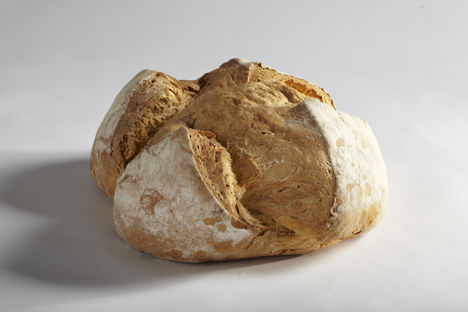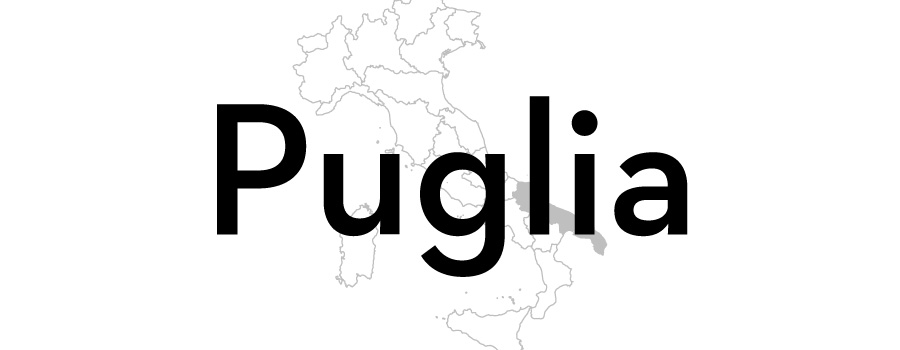
Pane di Altamura: the best bread in the world
Puglia is home to the only PDO-protected bread in the world, with many intrepid foodies making the trip to the region specifically to try it. Learn how it’s made and why it’s held in such high regard.
Pane di Altamura: the best bread in the world
Puglia is home to the only PDO-protected bread in the world, with many intrepid foodies making the trip to the region specifically to try it. Learn how it’s made and why it’s held in such high regard.
‘Altamura bread, by far the best bread to be had, so good that the wise traveller takes a supply with him for his onward journey’ (Book I, V of Horace’s Satires, 37 BC)
In Puglia, rolling fields of wheat swaying in the gentle breeze unfurl as far as the eye can see. This picturesque view reveals the key ingredient of what has been called the ‘world’s best bread’. Made from 100% durum wheat grown in the Bari province, Pane di Altamura reigns supreme in the city of Altamura. Here, the tradition of bread making is so ancient and important that we can find the first evidence of its history in 37 BC, in the above reference by the Latin poet Horace. During his travels through the lands of what we now call Puglia, the poet discovered the famous bread, and took a supply of it with him for his return trip. Horace’s writings are indisputable proof of the region’s age-old obsession with this bread, and the pursuit of its perfection.
Altamura bread is particularly special, as it is the only bread in Europe that has Protected Designation of Origin (PDO) status, which it was granted by the EU in 2003. The bread is therefore highly regulated; if bakers want to use the name Pane di Altamura DOP, they must meet all PDO benchmarks to ensure that they are using traditional methods and ingredients. These requirements include using particular varieties of wheat, a certain specification of water, a consistent production method and a final crust which must be more than three millimetres thick. That’s pretty precise!
Altamura bread obtained the coveted PDO because of the meticulous attention to detail local bakers and skilled artisans dedicate to the entire process, following an original recipe which is handed down through many generations. From the search for raw materials to the finished product, everything is done within the geographic boundaries of Altamura. The only exception to this rule is the durum wheat semolina, or semola rimacinata di grano duro, used to obtain the flour; it must come from the appulo, arcangelo, simeto and duilio wheat varieties, which are grown and harvested in Altamura or the surrounding areas of Gravina di Puglia, Poggiorsini, Minervino Murge and Spinazzola. Likewise, the yeast, grain, sea salt and water always comes from the local region, which is what makes the bread so unique.
While the PDO for Pane di Altamura does not specify a particular shape, there are generally two traditional ways the loaf is formed. Before being placed into wood-burning brick ovens, bakers will work the dough into a round ball and cut a cross into the top to make u cappidde de prèvete (or ‘priest’s hat’). Once baked, the bread will split, forming four distinct peaks. The other common shape is called u skuanète in the Puglian dialect, meaning ‘overlapped bread’. This looks like a large, rustic knot which is high and crossed over.
So why do people rave so much about this marvellous bread? It all comes down to its inimitable texture and taste; a three-millimetre crust gives Pane di Altamura a crisp, compact shell, which makes for a hearty, crunchy bite. This honey-coloured crust conceals a soft, straw-coloured crumb with a fluffy, aerated texture. The multitude of small holes are a proud indication of a successful natural leavening, and show off the bread’s moist, chewy qualities. Upon taking your first bite, you are greeted by a hint of sourness, which develops into a rich, earthy flavour as you chew on it and savour its subtle nuttiness. The bread’s distinctive yellow colour comes the from the use of semolina, which has a 10–15% higher capacity of water absorption than traditional flour. A high percentage of water allows the bread to stay fresh for up to two weeks without any chemical preservatives.
Throughout its history, Pane di Altamura was eaten by both peasants and royalty, bridging the gap between rich and poor, and reflecting the unity of the community of Altamura. Their pride in this cherished product is what turned a local bread into a celebrated champion of the baking world. So, if you want to take a slice out of regional Italian baking and enjoy the upper crust of Puglia’s cuisine, go for Pane di Altamura.

